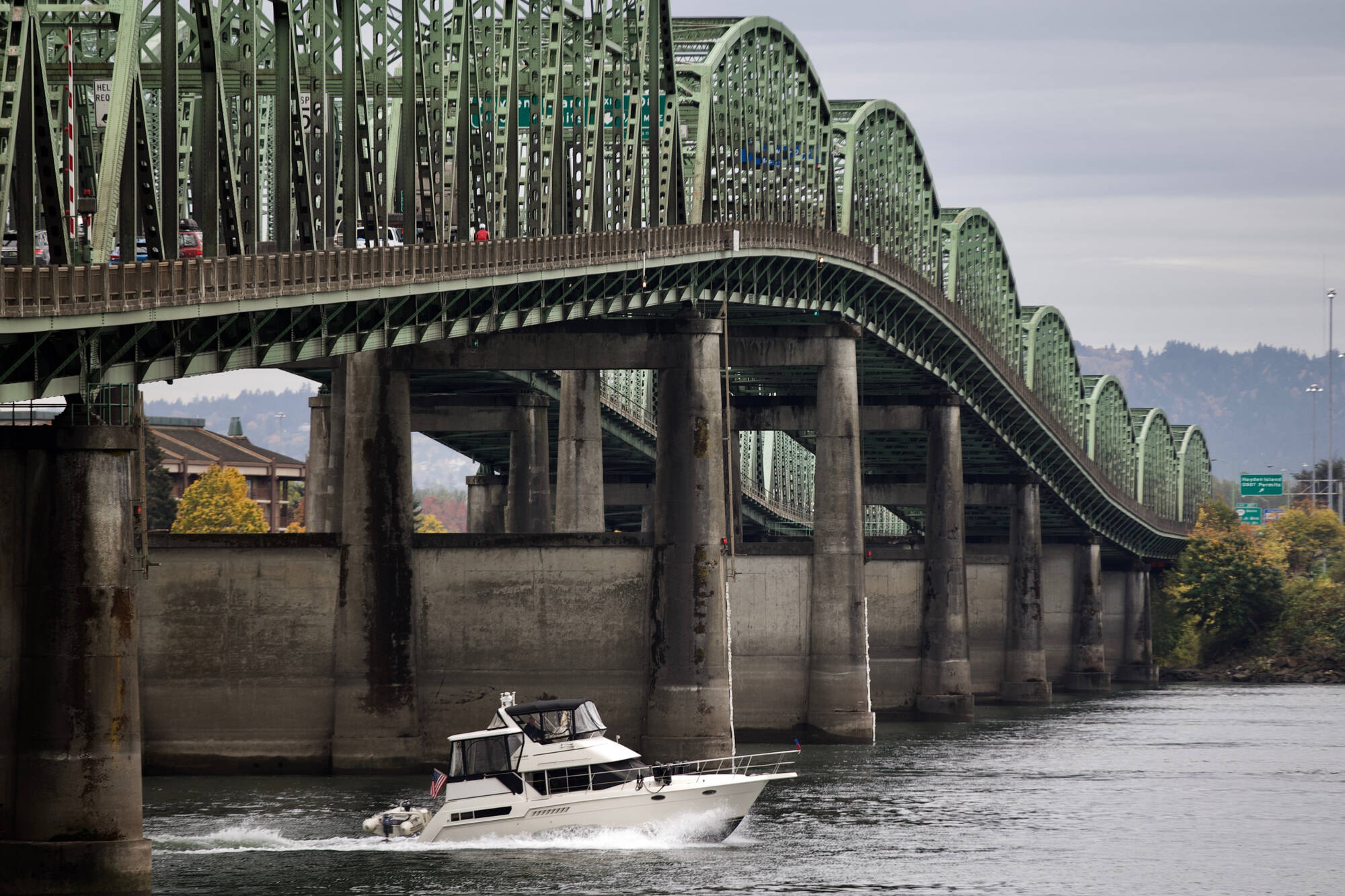VANCOUVER — Some 300 times each year, a span of the Interstate 5 bridge across the Columbia River must be raised, a task that involves about 6 miles of steel cables and typically takes 10 minutes or longer.
This disruption of traffic began when the first span of the bridge opened in 1917. In the 21st century, the lift to allow large vessels passage, and sometimes for maintenance, adds to the growing traffic jams — now estimated to stretch between seven to nine hours a day — along this vital link of roadway funneling passenger vehicles and freight trucks between Washington and Oregon.
In the event of a major earthquake, the bridge has a more serious problem. It is expected to bend or collapse outright.
A new effort to replace the bridge gained significant momentum during the 2022 Washington legislative session. Lawmakers committed $1 billion to cover the state’s anticipated share of a project expected to cost between $3.2 billon and $4.8 billion.
Meanwhile, legislation signed into law by President Joe Biden has created two new big federal pools of money — $5 billion for megaprojects and $12.5 billion for bridge investments — that also might help in funding.
Other financing could come from tolling, as well as an investment from Oregon’s Legislature as soon as next session.
“It’s time to now take this once-in-a-generation investment in infrastructure … and get this project built,” Sen. Maria Cantwell, D-Wash., said Wednesday, April 13, before a tour of the aging bridge.
Cantwell said there will be keen competition for federal funds, yet noted the qualifying language for megaprojects, when it came through the Senate Commerce, Science & Transportation committee she chairs, was drafted with the I-5 project in mind.
“It just so happens that this project meets practically all the criteria that is laid out in the program,” she said.
But before any federal money can be solicited, there needs to be a Washington-Oregon consensus about what this project should look like. And, through the years, that has been a difficult task.
The latest vision of a new bridge is expected to be made public within the next month by the Interstate Bridge Replacement Program, which was created in 2019 by the signing of a memorandum of intent by Oregon Gov. Kate Brown and Washington Gov. Jay Inslee.
This bi-state group includes officials from the Oregon and Washington transportation departments, and local officials from the southwest Washington and Portland areas.
The issues the group has explored include a height tall enough to do away with a draw span, and what type of public transportation option — light rail or some form of rapid transit buses — should be incorporated. Other issues involve interchange improvements, structural design, the number of lanes, and how to accommodate foot traffic and bikes.
“We should have a proposed solution in the next couple of weeks. That’s when the fun will start,” said Greg Johnson, the program administrator.
Johnson said the proposed plan will be open to public comment, and will undergo an environmental review projected to be completed by late 2023. Then, that document could be submitted as part of an application for federal funding. If all went according to the current schedule, work on the new bridge could start in 2025 and be finished along with new interchanges by 2032.
This planning effort represents a fresh start.
In 2013, after years of work on the project, some Republicans in the Washington Senate mounted fierce objections to the proposal, including the inclusion of light rail, which they said would be costly and would not generate enough traffic to merit the expense.
After Washington’s Legislature failed to approve the funding package, then-Oregon Gov. John Kitzhaber ordered the closure of the Columbia River Crossing project office, laying off more than 90 public employees and contractors. By 2014, the project was terminated after some $200 million spent in planning, according to an audit by the Oregon Secretary of State.
The I-5 bridge is one of two vehicle bridges to span the Columbia River in the Vancouver-Portland metropolitan area. Growing gridlock and the aging bridge helped generate support for the new effort.
Both spans of the I-5 bridge fail to meet current seismic standards and are deemed “functionally obsolete” by the Federal Highway Administration, a rating assigned to structures that do not have adequate lane widths, shoulder widths, vertical clearances or design loads to serve traffic demand.
The 6 miles of cables must all be greased once a year, and the current structure requires nine employees to operate. Over the next 20 years, the bridge would require an estimated $250 million in investments to keep it in operation, according to Roger Millar, Washington’s Secretary of Transportation.
The new planning effort led by Johnson has sought to build a coalition of support in Clark County and the Portland area, and Vancouver Mayor Anne McEnerny-Ogle was on hand Wednesday as Cantwell visited the bridge.
“We have more than 70,000 residents of southwest Washington working in Oregon,” McEnerny-Ogle said. “Our Washingtonians depend on a safe and effective transportation option. And that bridge right now does not provide that. … That bridge needs to be replaced with a new transit system. And that’s what we’re working on.”



